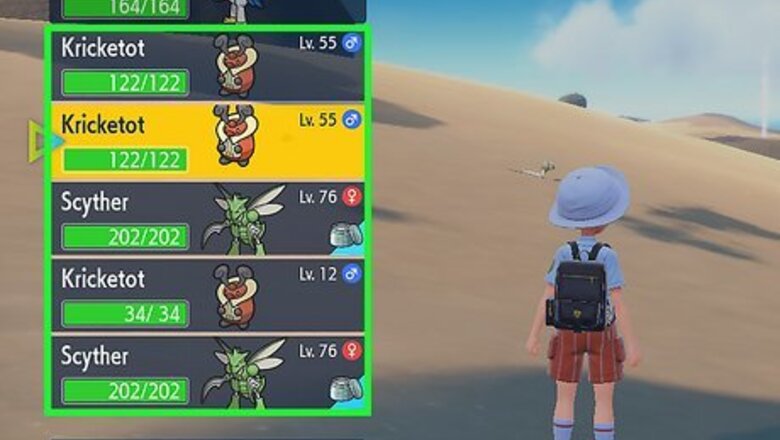
views
- Start up a picnic in Pokémon Scarlet/Violet with 2 Pokémon of the opposite gender that are in the same egg group. Later, check the picnic basket and see if there’s an egg.
- In Gen II, III, IV, V, and VI games, drop 2 compatible Pokémon off at the Pokémon daycare to breed them. In Gen VII and VIII games, use the Pokémon nursery.
- Use a daycare block to breed 2 compatible Pokémon in Pixelmon. To get the breeding process started, give specific ingredients to the daycare depending on the Pokémon’s type.
Pokémon Scarlet/Violet
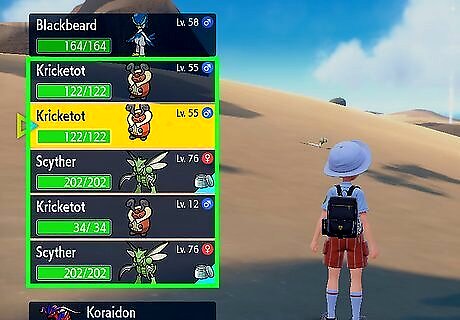
Fill your party with Pokémon in the same egg group. Egg groups are different categories of Pokémon that can be bred together. If you have a male and a female Pokémon of the same egg group in your party, they can breed and leave an egg in your picnic basket. If they’re from different egg groups, no breeding can occur. Egg groups are different from Pokémon types. Here’s a list of the different groups in Scarlet/Violet: Amorphous Group (Ex: Grimer, Slugma, Spiritomb, etc.) Bug Group (Ex: Scyther, Dustox, Kricketot, etc.) Dragon Group (Ex: Deino, Goomy, Dragonite, etc.) Fairy Group (Ex: Clefairy, Swirlix, Audino, etc.) Field Group (Ex: Rattata, Diglett, Aipom, etc.) Flying Group (Ex: Pidgey, Natu, Skarmory, etc.) Grass Group (Ex: Oddish, Comfey, Exeggutor, etc.) Human-like Group (Ex: Abra, Mr. Mime, Jynx, etc.) Mineral Group (Ex: Geodude, Lunatone, Steelix, etc.) Monster Group (Ex: Marowak, Tyrannitar, Aggron, etc.) Undiscovered Group (Baby and legendary Pokémon—can’t be bred) Water 1 Group (Amphibious-type water Pokémon, like Poliwag, Froakie, and Mantine) Water 2 Group (Fish-type water Pokémon, like Goldeen, Carvanha, and Wishiwashi) Water 3 Group(Invertebrate-type water Pokémon, like Tentacruel, Starmie, and Armaldo) Some Pokèmon exist in more than 1 egg group. For instance, a Dratini falls in both the Dragon and Water 1 egg groups. Did you know? When you can breed 2 different types of Pokémon together, the resulting egg will be the same Pokémon as the female in her lowest evolutionary form.
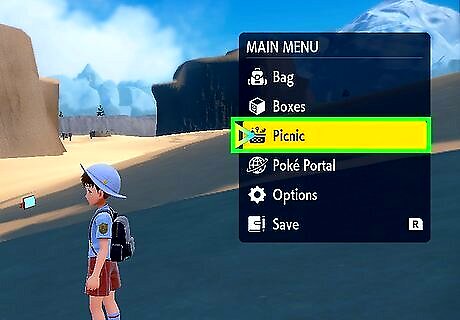
Set up a picnic in your game. Head over to an open spot in your game—any place that isn’t in town, on a slope, or in a narrow location should be good. Then, pull up your menu and tap the “Picnic” option to get your picnic started. You don’t need to do anything to get the Pokémon to start breeding—it’ll happen automatically. To boost your chances of finding eggs after the picnic, make sandwiches like a Great Peanut Sandwich, Great Marmalade Sandwich, Great Sweet Sandwich, Ultra Pickle Sandwich, and more.
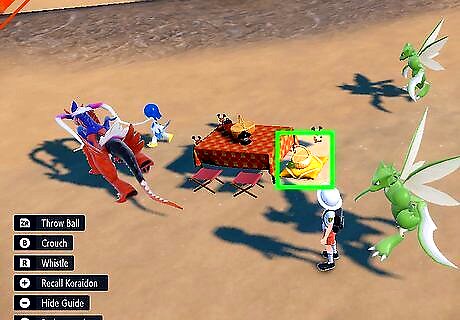
Check the picnic basket after a couple of minutes to get an egg. Look for a picnic basket close to your picnic table. After a successful picnic, your Pokémon will deposit their eggs into this basket. Once you pick them up, the game will treat them as Pokémon.
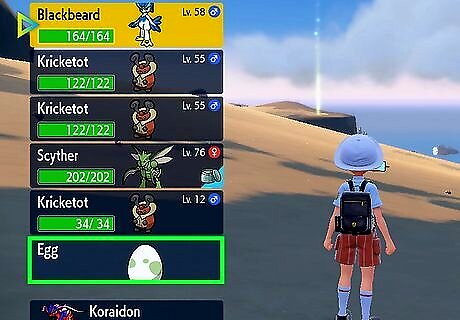
Put the egg in your party and move around. As is the case in all Pokémon titles, eggs hatch when you walk a certain number of steps in-game. Rearrange your party so the egg is filling up one of the slots. Then, all you have to do is move around—swimming, walking, and even gliding can help your egg to hatch and reveal the Pokémon inside. Pro tip: Stick a Pokémon in your party that has the Flame Body ability, like Larvesta. They’ll passively help reduce the waiting period for hatching.
Gen II through Gen VI (Gold/Silver/Crystal through X/Y)
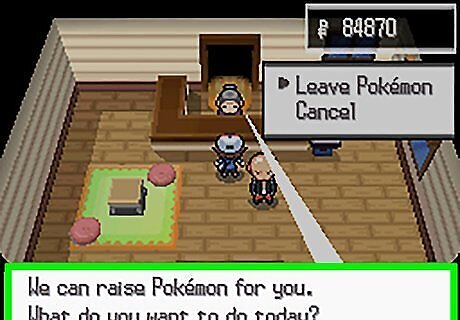
Drop off Pokémon in the same egg group at the daycare. Just like in Pokémon Scarlet/Violet, older Pokémon titles operate under the same egg group requirements. In these classic games, all you have to do is give a male and female Pokémon of the same egg group to the daycare worker and then wait for the magic to happen. Like in Scarlet/Violet, Pokémon of different egg groups can’t breed together. Gen VII and Gen VIII Alternative: The Gen VII (Sun/Moon) and VIII (Sword/Shield) games have an almost identical breeding system, but they feature a nursery rather than a daycare.
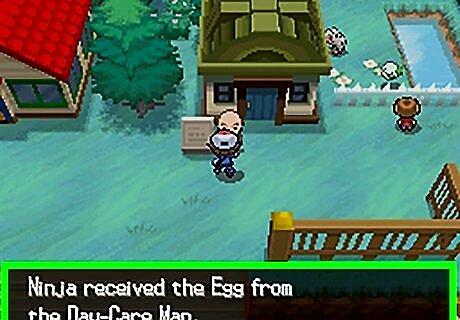
Pick up the egg from the daycare. Typically, the worker standing outside of the daycare switches positions once an egg has appeared. Simply walk up to this worker to collect the egg. Walk around near the daycare—you have to move around in-game to get the breeding process started. Every time you take 256 in-game steps, stop by the daycare to see if there’s an egg. Statistically speaking, breeding 2 of the same Pokémon together yields an egg more quickly than 2 different Pokémon.
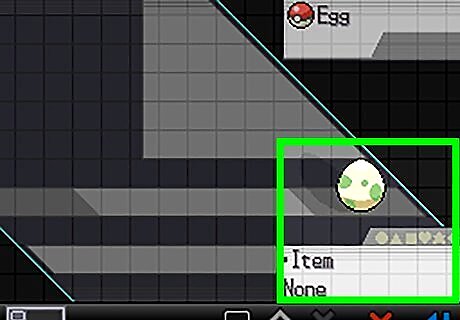
Add the egg to your party and walk around in-game to hatch it. Rearrange your party so the egg is one of your key members. Then, walk around in your game until the egg hatches.
Pixelmon
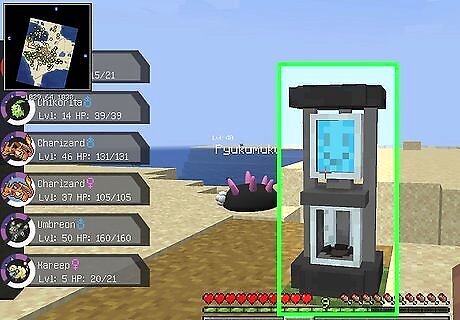
Set up a daycare using a daycare block. Visit a shopkeeper or head to a nearby village to collect a daycare building for yourself. Place the daycare in your own town so you can use it whenever you’d like.
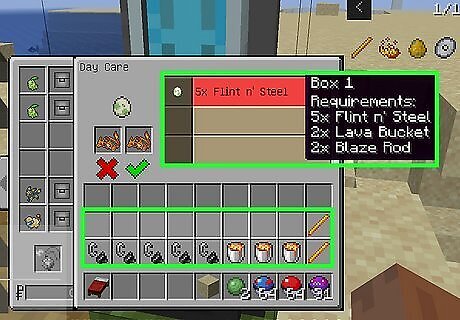
Input the required items for each Pokémon into the daycare. Interact with the daycare building—it will ask you to input 2 Pokémon, along with a few common Minecraft items that relate to each Pokémon’s primary type. Let’s say that you’re breeding a Fire-type and a Dark-type Pokémon together. For the Fire Pokèmon, you’d need to insert 5 flint and steel, 2 lava buckets, and 2 blaze rods; for the Dark Pokémon, you’d need 2 blocks of coal, a skeleton skull, and 1 piece of obsidian. Click here for a master list of the different items you’ll need.
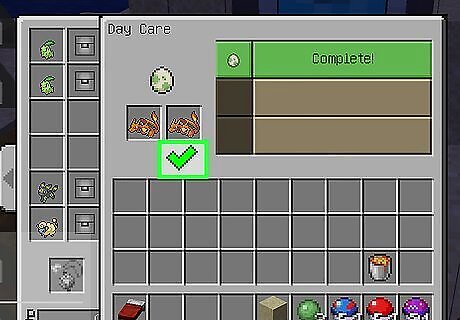
Hit the green check mark and wait at least 90 minutes for an egg. The breeding process starts as soon as you hit the green button. Feel free to continue playing while your Pokémon breed in the background. If you don’t feel like waiting (or collecting ingredients), use one of Isi’s Gold Hourglasses to skip over everything. Use a Diamond Hourglass to skip over the waiting period and give your Pokèmon perfect Individual Values (IVs).
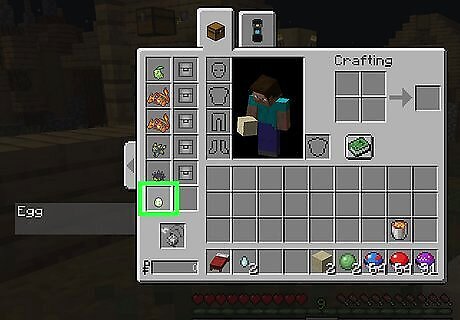
Move around the map with the egg until it hatches. Keep the egg close and walk around the map until your egg hatches. Unsure if your egg is close to that point or not? Use the PC to inspect your egg’s hatching status. If a Pokémon in your party has the Steam Engine, Flame Body, or Magma Armor ability, the hatching will speed up.
Pokémon Breeding Hacks
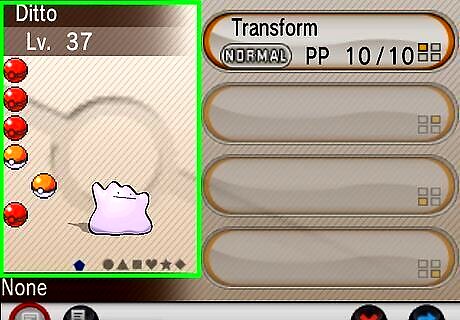
Utilize Ditto when you breed your Pokémon. Ditto is a unique, blob-like Pokémon that can mimic and breed with almost every Pokémon out there. If you can’t find a good combo of Pokémon to breed, throw a Ditto into the mix to get things going. When you breed a Ditto with one of your Pokémon, the resulting egg will be the lowest evolutionary form of the non-Ditto Pokémon. For example, breeding a male Vileplume with a female Ditto would get you an Oddish egg.
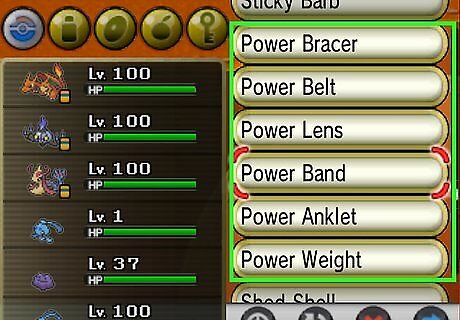
Use “Power” items to improve the stats of the egg. Starting in the HeartGold and SoulSilver games, you can give special “Power” items to the Pokémon you breed. These items transfer a parent’s specific Individual Value/IV (elements that positively influence your Pokémon’s stats) to the egg. If one of your Pokémon has an especially high IV, give it one of the following items before you breed it: Power Anklet: Transfers Speed IV Power Lens: Transfers Special Attack IV Power Band: Transfers Special Defense IV Power Belt: Transfers Defense IV Power Bracer: Transfers Attack IV Power Weight: Transfers HP IV Some games let you check your Pokémon’s IVs with the in-game PC. This often happens after you’ve beaten the storyline in the game.
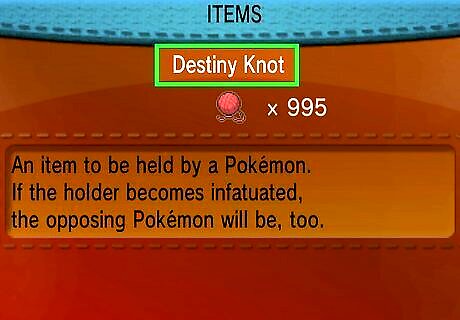
Use the Destiny Knot item to transfer 5 out of 6 parental IVs to the new egg. Have a Pokémon with near-perfect IVs? Give it the Destiny Knot item before you breed it—this guarantees that the egg will have 5 of the parent’s IVs as part of their stats. This item was first introduced in Pokémon X and Y (Gen VI).
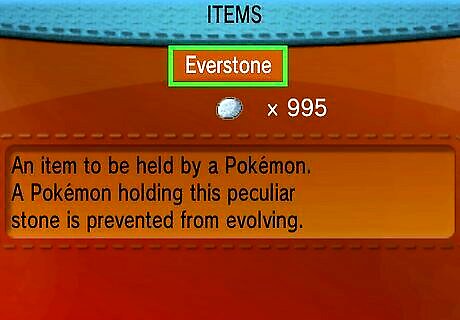
Give an Everstone to the Pokémon with a nature you’d like to pass down. In the world of Pokémon, a Pokémon’s nature can influence their stats—for instance, a Lonely Pokémon has better Attack stats but worse Defense stats. If you were to give a Lonely Dewgong an Everstone before breeding it, the Lonely nature would be passed down to the Seel egg. In older games (any series that came before Black 2/White 2), the Everstone gives your Pokémon a 50% chance of passing their nature down.
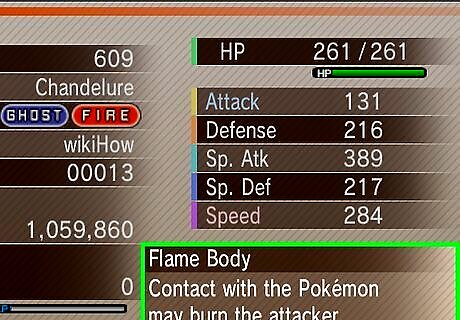
Hatch eggs faster with the Steam Engine or Flame Body ability. From Pokémon Emerald and beyond, adding a Pokémon with the Flame Body ability to your party (like Ponyta) decreases your total hatching time by 50%. Similarly, having Pokémon with the Steam Engine ability (like the Rolycoly evolutionary line) on your team also cuts the total hatching time by 50%.
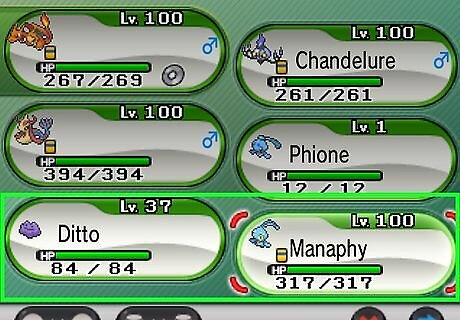
Breed the legendary Pokémon Manaphy with Ditto to get Phione. Yes, it’s true that most Legendary Pokémon can’t reproduce—but Manaphy is an exception! When you breed this special Pokémon with a Ditto, you get the adorable Phione.

















Comments
0 comment